In the Studio: Samira Abbassy
“My attempt in depicting the human form is almost like a psychic x-ray, so the n...

Adam de Boer is a Los Angeles-based artist and 2021 recipient of the Joan Mitchell Fellowship. We interviewed him about his work and studio processes in April 2022. The following is an edited transcript of that conversation.
I make mixed media work inspired by my mixed race identity—specifically my Dutch and Indonesian ancestry. My father was born in Java and became a political refugee with his family, first moving to the Netherlands, then to the Caribbean, and finally to California in the late ‘60s as a result of Indonesian Independence. That story was kind of forgotten as they moved on to their American assimilation processes.
Through art and through surfing, I found my way back to Indonesia in my mid-20s. And ever since then, I've been taking that history as a source for making work and thinking about the way that my work can speak to the world now. Past is prologue, and we're not over a lot of the colonial histories that began hundreds and hundreds of years ago.
As a way to engage with that history and understand it—because I knew nothing before my mid-20s—I went to Indonesia and started working with my hands. I was interested in textile design, batik, low-relief carving, woven mats, leather work—taking time to study with craftspeople, just kind of collecting all these different materials to be able to mix them up in ways that I think are interesting, in ways that help me articulate the stories I'm trying to tell.

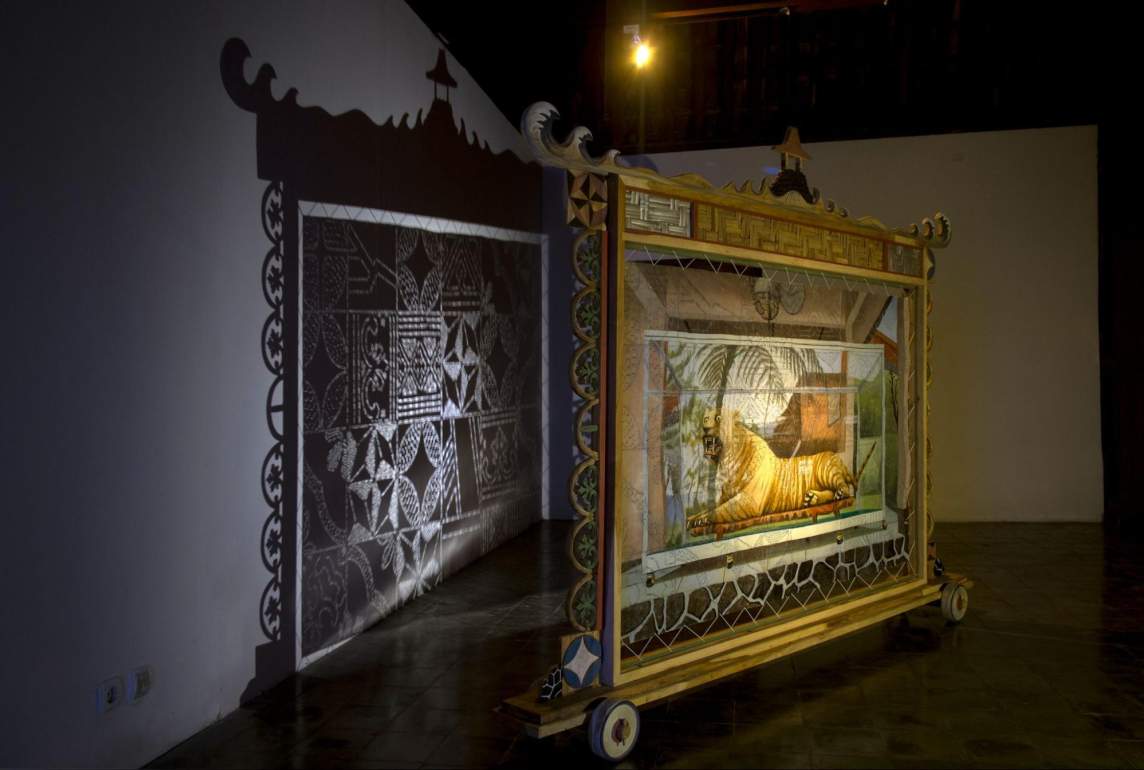
Alongside all that craft information, my work is also informed by the canon of Western art history from about the 14th century on. I was educated at the University of California Santa Barbara, studied in Italy, attended graduate school at Chelsea in London, and spent a lot of time in Europe. A lot of artists have used this kind of “multi-culti” thing for work. From the very beginning, there are examples in Indonesian antiques of all these different Portuguese influences or Chinese influences, etc. I'm interested in how pervasive this mixing is and has been. It is everywhere you look, once you start looking. Even though it sounds very personal and kind of academic, I think my work really just comes from direct observation and I try my best to make things that are as open ended as possible.
My family has no surviving documents from Indonesia. And my dad was quite young when he moved and had no particular interest in the story. My older ancestors have died. So there was nothing really guiding me saying, "Okay, great-grandma whomever was born in this city. You should go there and figure that out." I really didn't know anything. I didn't even know any names. So I just started inventing stories or imagining what could have been.
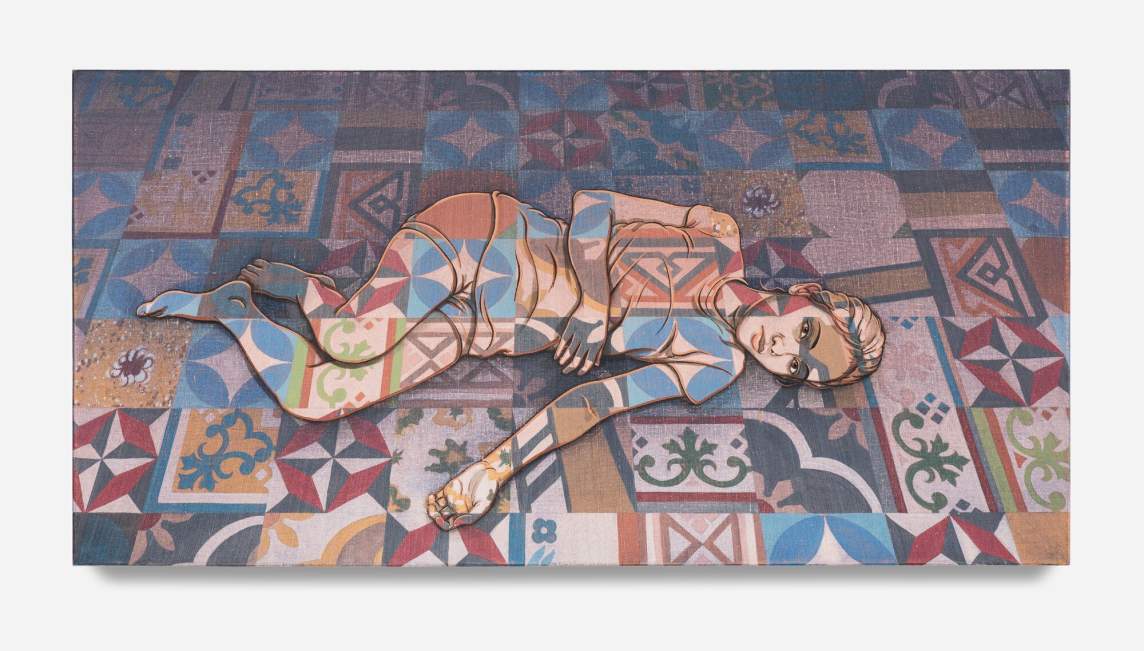
A lot of the things that I have made work about in the past are certain archetypes that are formed around general postcolonial stories or colonial stories. Indonesian historical fiction has informed the work that I've made. There's an important set of novels called the Buru Quartet that was written by a journalist named Pramoedya Ananta Toer who was in exile for a long time. He wrote thousands of pages of a narrative that basically describes the entire Indonesian independence story over a couple of generations. So I made work about that. I'm imagining the characters, what they look like, things like that, but trying my best not to be too prescriptive. I think that's where a lot of representational art can go wrong when dealing with these particular politics. It tends to be tedious for viewers and for the people making it, too. Like, this is not a political poster, this is a painting, and it should operate in a different way.
I just finished a body of work for the NADA NY show (Hunter Shaw Fine Arts at NADA Fair, May 2022, New York). It’s a small series—six pieces—all about trying to capture, in batik, the light in Los Angeles this spring. All the pieces were made in the past couple of months, and they tell the story of the arc of a day. So there's one for the sunrise, morning, mid-day, afternoon, sunset, and midnight. I don't think the gallery will let me install them like that—it's too on the nose—but I think it looks good all together.
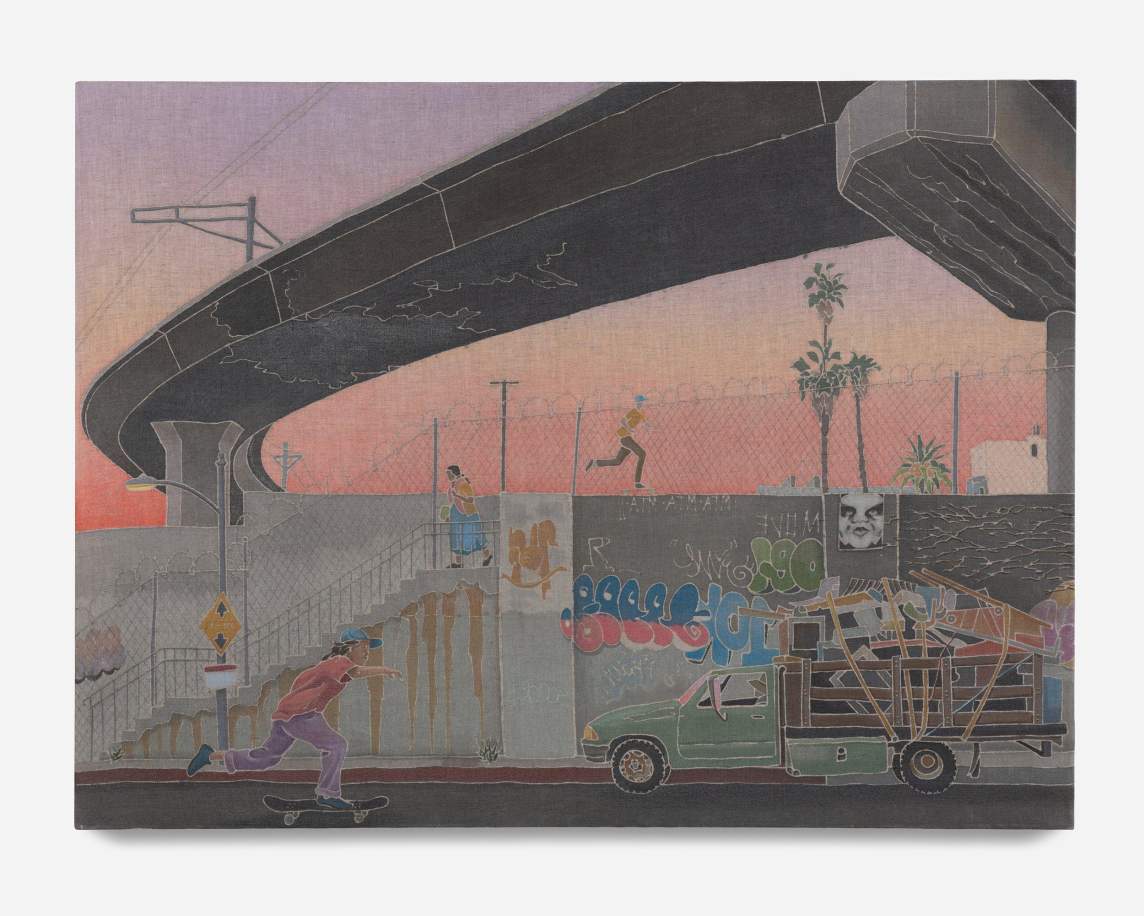
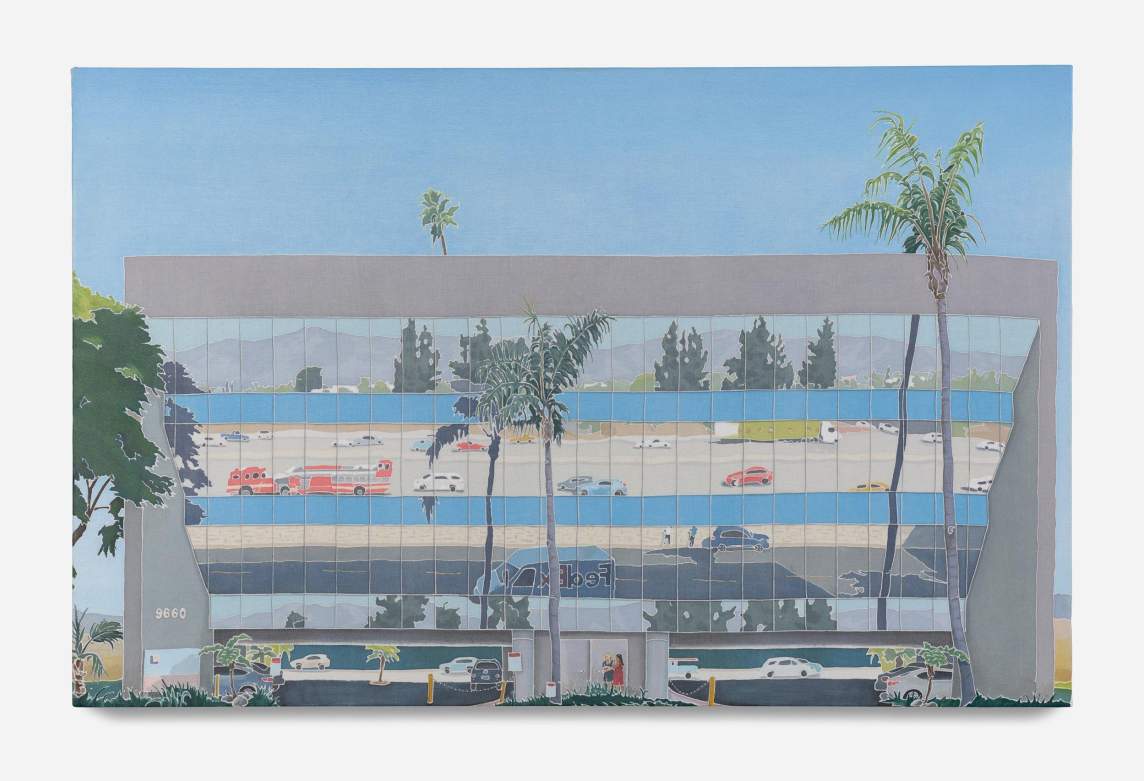
For most people, they just look like paintings of LA, but for the more informed viewers or people that I speak with at the booth, they may ask, "Okay, but what is the material like? That looks strange. What are these white lines?" And then they can understand, these are paintings of LA made with batik. So the answer to this question, "Why would that be? How did this object come into being?" is the point of the work.
There's been a lot of art riffing on Dutch wax fabrics, which are a batik-like process. For example, Kehinde Wiley or Yinka Shonibare use that fabric as a stand-in that represents the history and politics of European colonialism. For them, I think that as long as they quote it, then it deals with it. My first experiments with using batik as an artistic medium had to do with that. I was buying batiks, sarongs, and things, photographing them, drawing from them, cutting them up and collaging with them. But then I thought, it's not close enough. I'm really trying to understand this. And I am a painter after all. I don't just want to illustrate these ideas. I want my work to embody these ideas.
Once I started doing paintings using batik techniques, I realized what it afforded me. Essentially, the way I’m making these paintings is by delineating the shapes with beeswax using a traditional Javanese wax-applicator called a tjanting. Then I mix dozens of acrylic washes to float over and in between the wax lines.
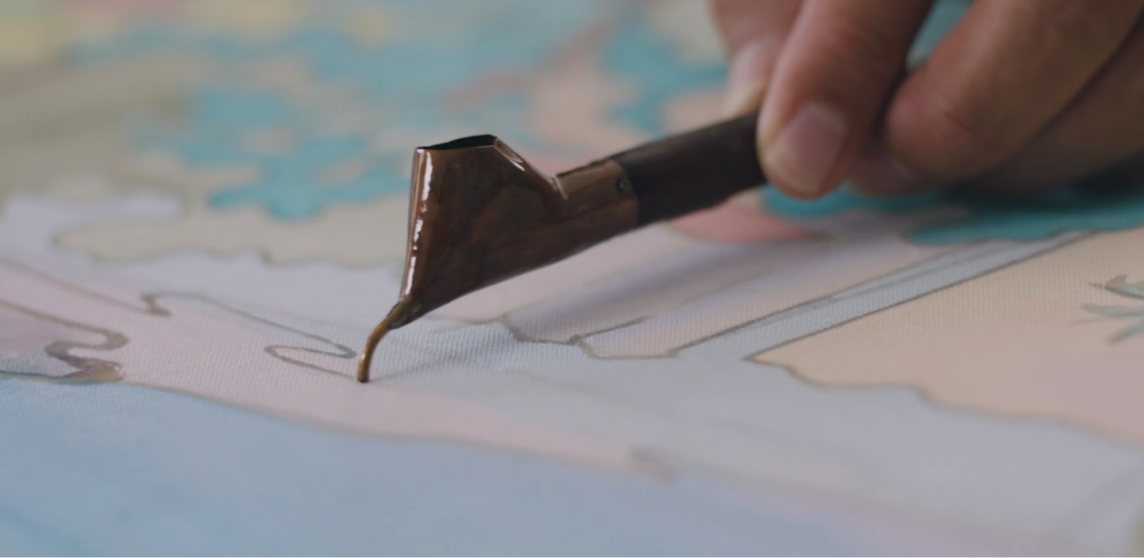
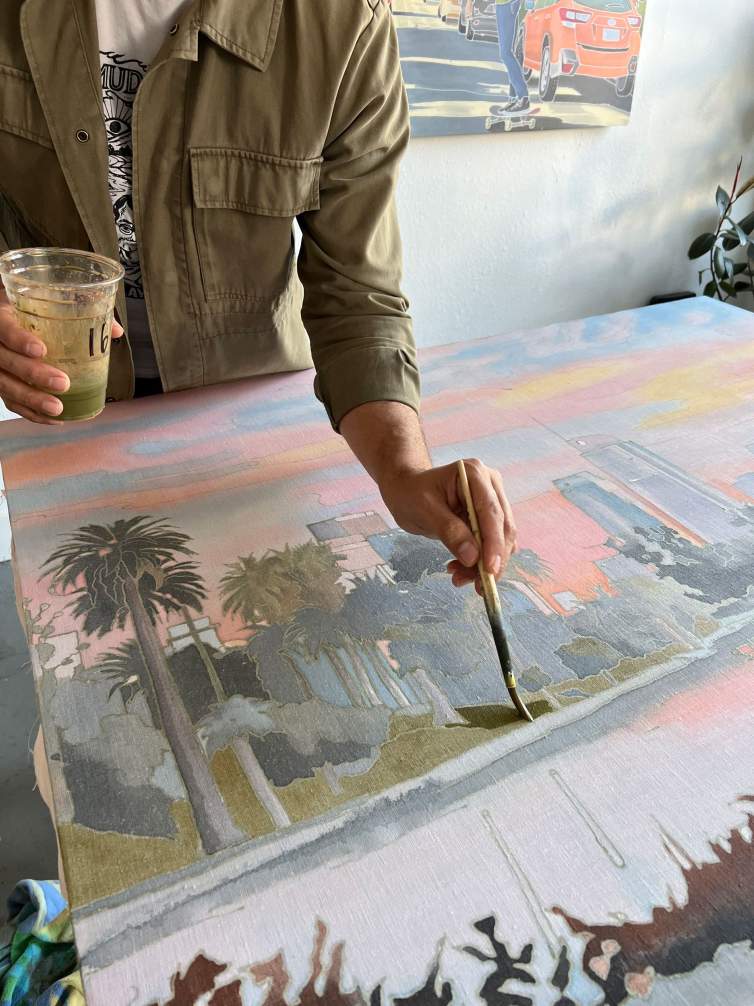
I love watercolor, and that led me—years ago, before I ever went to Indonesia—to make stain paintings. Stain paintings are really complicated, especially if you're interested in representational imagery, because you can't control it very well. So what batik is actually allowing me to make are large format, completely controlled (more or less) stain paintings that are also archival. I used to work at the Hirshhorn Museum in the conservation lab and painting collection. So from a very young age, I’ve been very conscientious of materials, how artworks age, your responsibility once they leave the studio, especially if you sell them or they're collected by institutions.
Another thing that is nice about batik is that the wax removal uses a boiling process. So you scrub it, and it’s like putting clothes in a hot washing machine. Everything gets very soft, and that comes across in the final piece. Even if a viewer cannot articulate it or even understand what they're looking at, the color is in the surface. It's not on the surface. So there's something kind of... “Soft” is the adjective I'm describing, but there's more to it than that… It's a bit of a puzzle, and I do appreciate that.
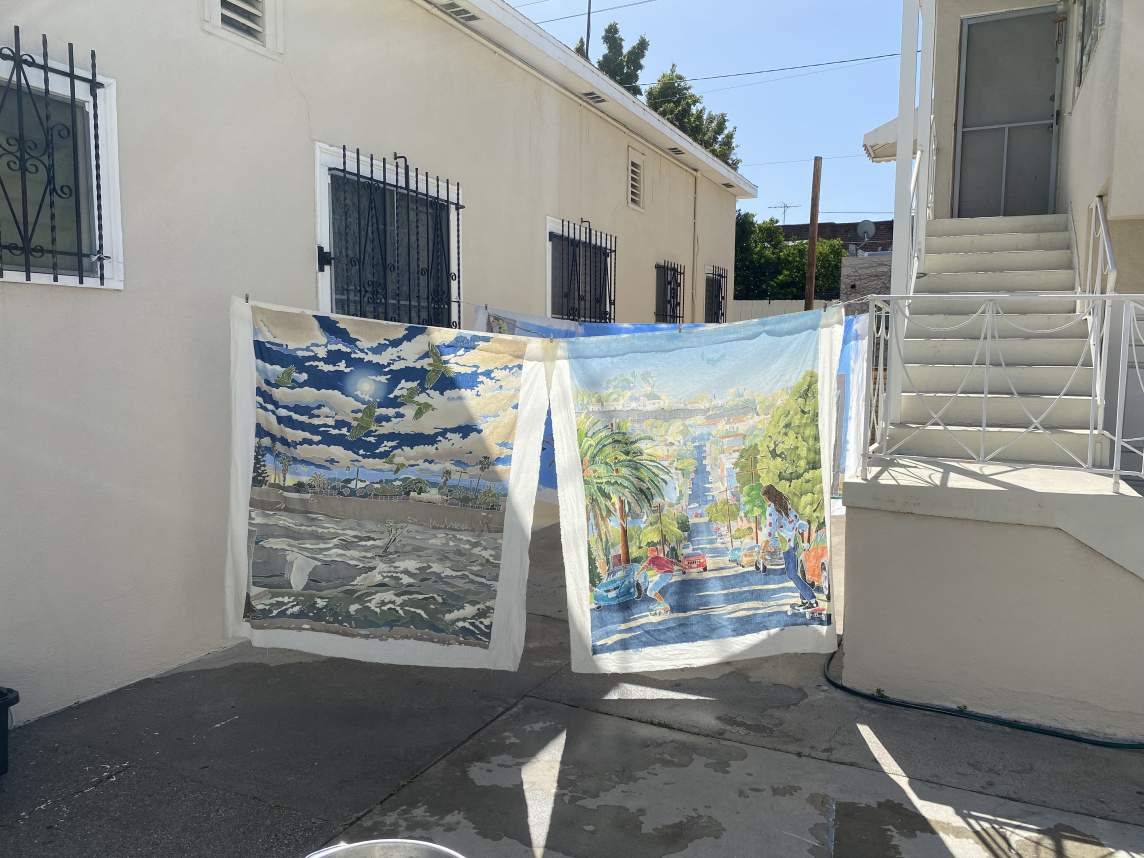
I should note that I call it batik, but if I were in Indonesia, they would not call it batik because I'm not actually doing it correctly. Over about 10 years, I’ve kind of made the process my own, because I have very specific needs. I don't use dye baths. I'm using thinned out acrylic paints, partially, so I can control the hue much more subtly and actually see the real color in the cup, rather than relying on some pre-made things that I have to mix with measuring devices. You become more like a chemist when you work with dyes. And as I mentioned, I’m concerned with the archivability of the paintings, so it’s best to avoid the traditional vegetable pigments if you want the object to change very little over time.
I think I've crossed a threshold in terms of what I can do with color in batik and how I can control it. Because the fabrics get boiled, a lot of saturation is lost. It's a long story, but I over-saturate them as I make them. Through painstaking trial and error, I've memorized how different hues change in the boiling process. And then in order to get beyond what that particular staining and the boiling process can do, I’ll add in crayon, oil paint, other media that is used as a way to adjust saturation and also texture.
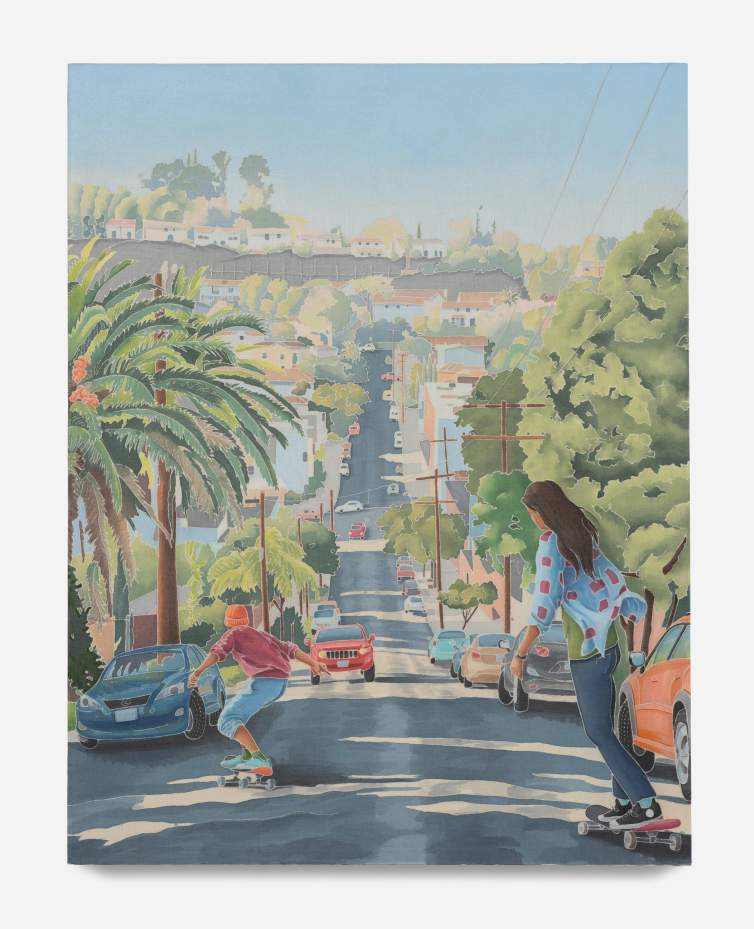
What I'm really trying to do is to make batik as naturalistic as possible, which is kind of strange because there's a white line around every single shape where wax is applied, so it ought to look flat in an ‘allover’ painting kind of way. It's as flat as it can be up close, but with a little bit of distance, that illusion of depth comes through due to how it’s colored. As I said before, I studied in Italy, and early Italian concepts of organizing space inform everything in my work. But, I'm trying to keep that aspect as invisible to the viewer as possible because most people are very bored by these conversations about process…
I have a lot of shows on the horizon right now, and I think a lot of it is thanks to the Joan Mitchell Fellowship and the visibility that it's given my work. It's quite literally changed my life, but I'm sure you hear that from every single person. I'm booked for two years all over the world. For the first time in my life, I don't have a part-time job. I'm taking a break from teaching. I just have a lot of painting deadlines.
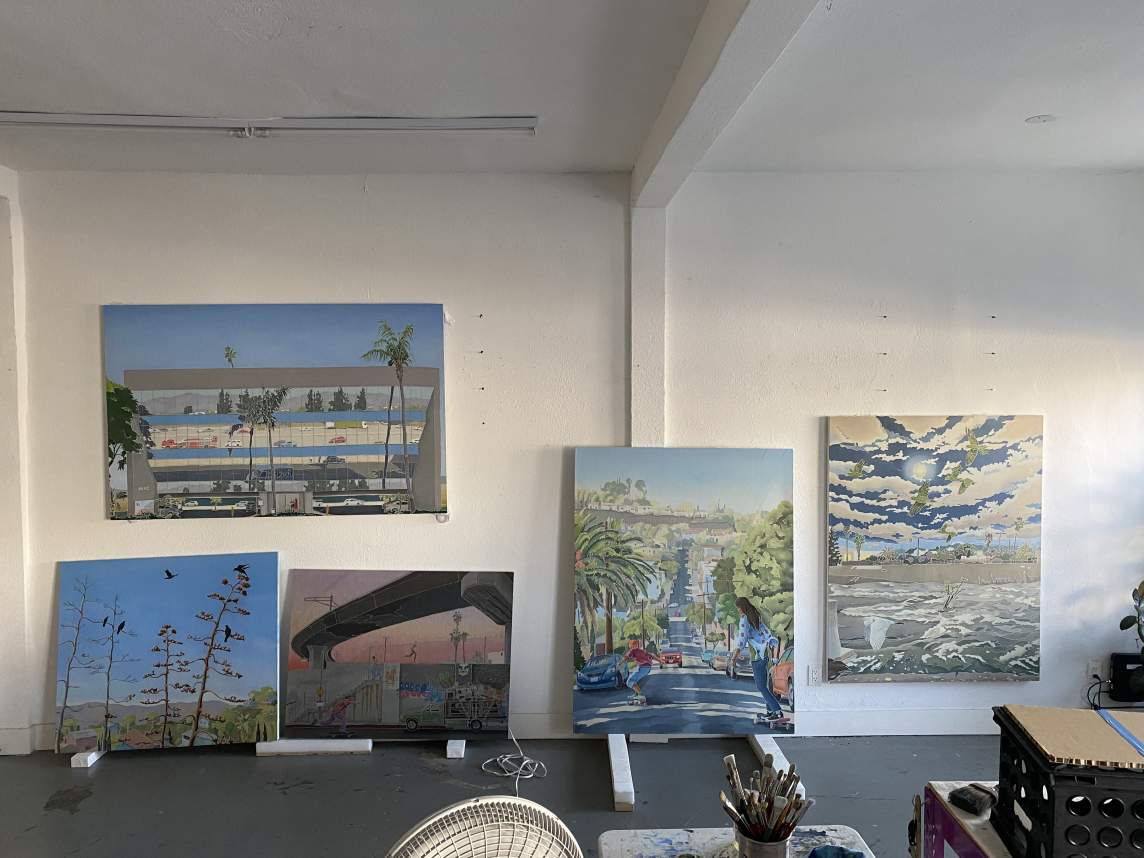
Coming up, I'm in a group show at Ben Brown Fine Arts in London. The current installation is at their space in Hong Kong, and I'm showing with some painting heroes of mine, including Chris Ofili who is one of the reasons I went to graduate school in London in the first place. So I’m trying to kind of follow in his footsteps.
Then I'll be in a group show in Dubai with Taymour Grahne Projects, which is a gallery based out of London. Then I have a solo show in Jakarta with one of my favorite galleries in the world, coincidentally, this institution called Gajah Gallery. And this week I just got a green light from them for a solo show opening there in February 2023.
It's kind of interesting for me to have such a range of shows coming up, because as I said, I use various materials, whether it's painting, drawing, watercolor, and all these different crafts. I don't really see them as distinct from one another. It's just, you get the idea and you pick the material that helps illustrate it. I'm appreciative of being able to show in such distinct places because it allows me to be selective about which work I’m making and which stories and imagery I’m bringing to different settings. So I can make works that are landscapes about Los Angeles, and also tell stories about Java and my father and the tiger in Indonesia. It allows me to be strategic about who sees what and when.
Interview and editing by Jenny Gill. Learn more about Adam de Boer’s work at adamdeboer.com.